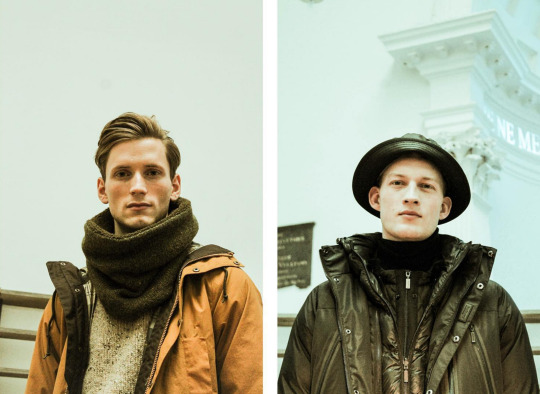
January marks the beginning of a number of tradeshows, first starting in London, then moving to Milan, Paris, and New York City. Pitti Uomo is the most important for tailored clothing, although lately, I’ve been paying more attention to London Collections: Men (LC:M), which is a five-day show showcasing a breadth of British fashion talent – from the world’s most innovative designers to Savile Row tailoring houses (at least the ones that now have seasonal ready-to-wear lines). Even for guys who might not be interested in runway presentations, there’s a lot here to admire. From Barbour to John Lobb to E. Tautz, here are eight shows that caught my eye last week.
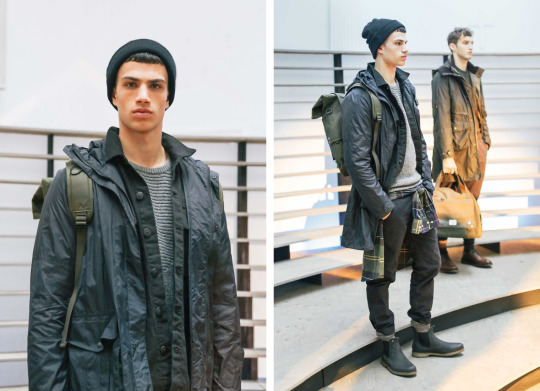
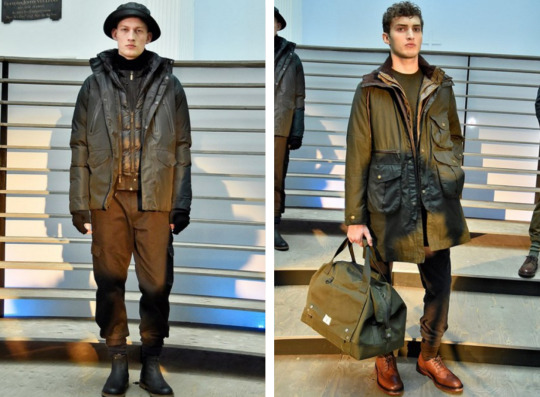
Barbour has always been good at conveying their brand history in a modern context. For this coming fall/ winter season, they have two lines – one called Night Watch, the other Ancient Tartan. Night Watch takes inspiration from the company’s archived naval coats and the lighthouse beacon that originally stood at the mouth of the River Tyne. Those who have seen older Barbour catalogs may celebrate these longer designs. The Ancient Tartan collection, meanwhile, takes Barbour’s exclusive prints (which were previously used for their checked linings) and puts them in a more decorative role.
As they usually do with their more fashion-forward lines, the silhouettes have also been slimmed up some, making these heritage-inspired coats more wearable in a modern, city context. The short jacket with long, diagonal zips across the chest is my favorite, although the hooded coat constructed from a black technical fabric also looks like it would work nicely as a lightweight layering piece.

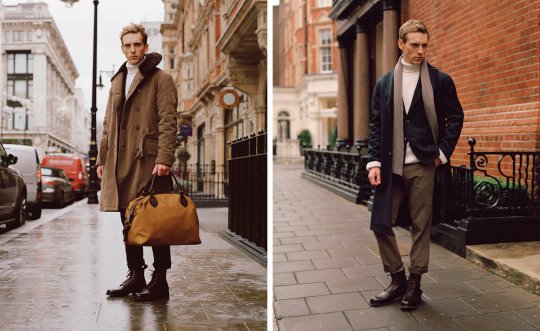
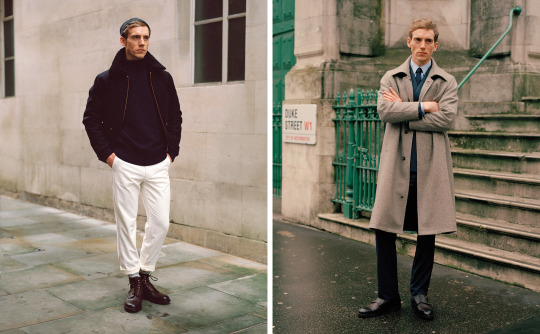
Private White VC is a relatively new heritage-inspired brand making things in their own Manchester factory. Designs often draw from military and motorsport outerwear, although they’re often tweaked in ways that make them easy to wear with everything from tailored trousers to jeans. (Full disclosure: they sponsor Put This On, a site I write for, but I’ve been digging their stuff for a few years and I don’t do sponsored editorials).
This latest collection features the company’s usual range of upscale bombers and macs, and introduces a long, Mackinaw-style coat that looks dressy enough to wear on a nice night out. Mackinaw coats are an early 20th-century style of outerwear. Originally cut from blankets (often ones made from a coarse, heavy wool known as Mackinaw, hence the name), they eventually made it to the shelves of Brooks Brothers and Abercrombie & Fitch, where sportsmen bought them. You rarely see the style nowadays, but damn – with a cabled turtleneck and black boots to highlight collar, this might be my favorite coat out of all the presentations.
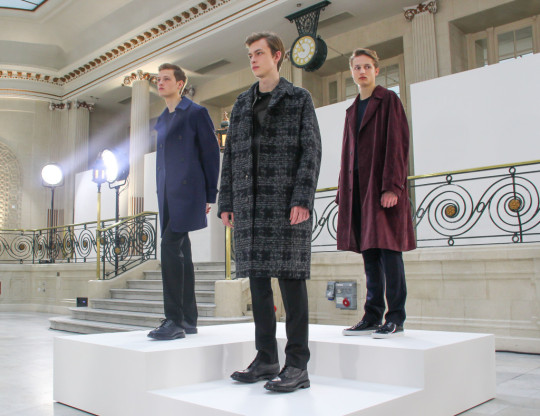
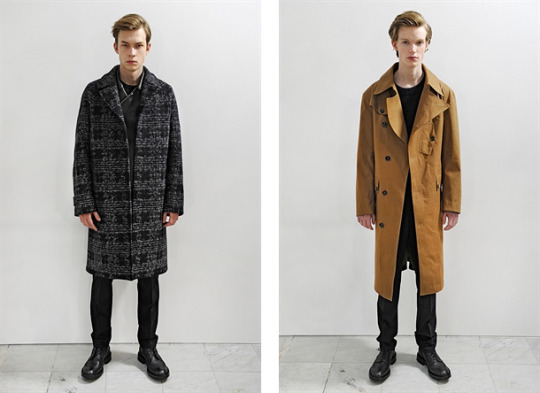
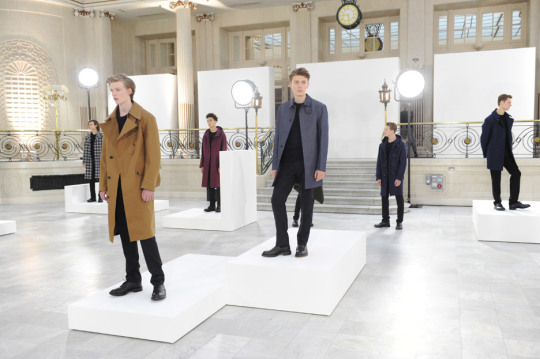
We’re still very much in a slim-fit era, but as silhouettes are starting to fill out again, hemlines seem to be lowering. At Mackintosh’s latest presentation, there were only two coats that ended mid-thigh – everything else terminated either at or below the knee. And thank God. Long raincoats not only look better, they’re also much more practical. In ten years, we’ll be wondering who came up with the idea of making short raincoats to protect people who were already using umbrellas.
Most of the macs rely on the simple A-line silhouette for which the company is famous. Bonded cotton coats in solid colors; some with hoods and some without. The two standouts for me, however, include the boldly checked, grey wool mac you see above, as well as the double-breasted trench with dramatic lapels and a map pocket. Thrown over a chunky sweater and some jeans, they look like they would add a touch of sophistication to what would otherwise be a casual ensemble.
Oh, and they also had a wraparound poncho.

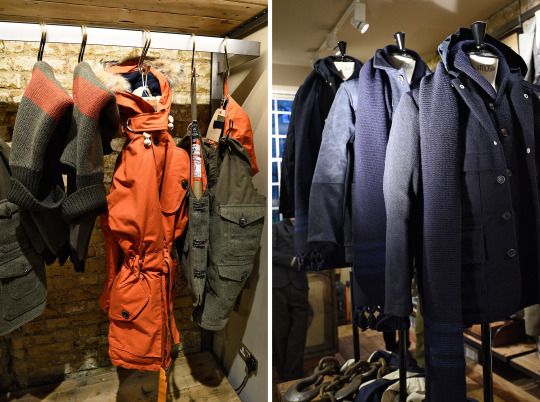
Nigel Cabourn’s LC:M presentation didn’t lend itself well to press photos, but his Instagram account explains some of the key pieces enough. For this coming fall, there will be a Sherpa tweed jacket made from a dry waxed Harris Tweed body and Ventile cotton hood. The design looks like a cross between the company’s famous Mallory jacket and Cameraman coat.
Speaking of which, the company is also coming out with a Cameraman-inspired sneaker with Converse. I’m not sure I like the double-clasp closure, although the company’s parkas remain a favorite. See the orange Antarctic parka hanging in the photo above, which was actually introduced last year.
For those wanting more budget-friendly clothes, Cabourn is expanding his Lybro line, which takes inspiration from the military uniforms worn by WWI ammunition factory workers and uniforms of postal and railway workers in the immediate post-war period. If previous seasons are any indication, expect these to be about half the price of the company’s mainline gear (although, also more industrial than mountaineering inspired).

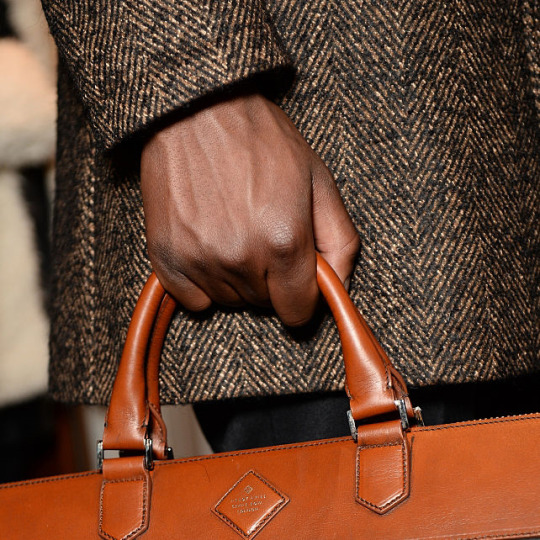

The tailoring at Hardy Amies was a bit too short and slim for my taste, but I love how adventurous they got with some of their outerwear fabrics. Slubby, unevenly textured twills and herringbones made up the two examples above. They remind me of Lemaire’s Maxi coat this season, which I really wanted but wasn’t able to get. I dream of finding fabrics this interesting for bespoke projects, but this is a great example of where ready-to-wear excels.
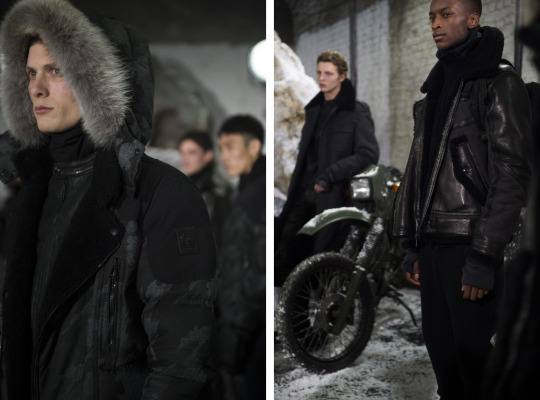
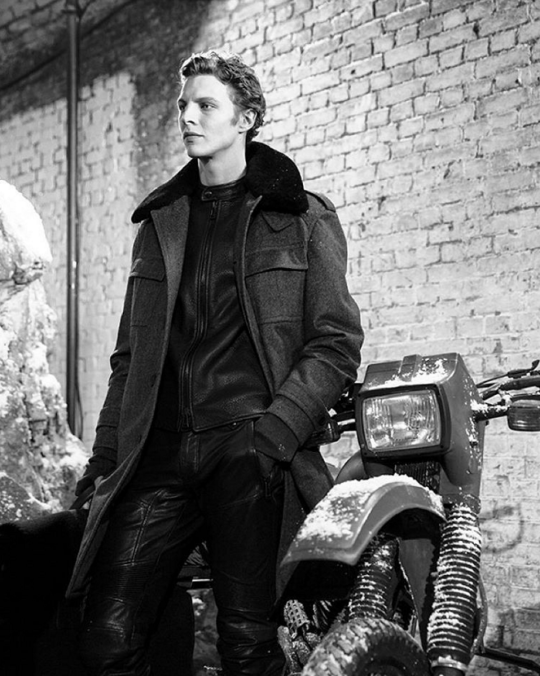
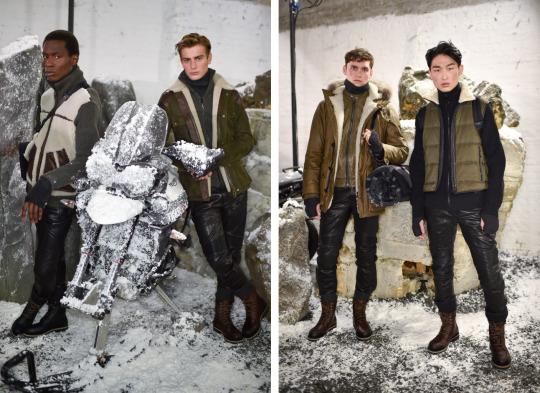
Belstaff’s designers might live on a different planet. Their FW16 line takes inspiration from the harsh, unforgiving climate of the Arctic, even though this past winter felt like a San Francisco summer. If this weather pattern continues, I’m not sure if the knitwear industry will even survive.
In any case, the Belstaff “Heading North” collection featured heavy, fur-trimmed parkas and pilot jackets in a cold palette of polar whites, oil blacks, and iron grays. The mix of fur trimmed coats with skinny, leather pants feels like a blend of exploration gear and Belstaff’s motorcycle roots, or maybe just a scene out of a Moscow nightclub.
I do love the shearling trims though, and if I were still living in Russia, I might actually consider getting one of those parkas. For something more wearable in temperate climes, Belstaff has a long, military-inspired coat with epaulets and a fur collar. Yes, you will still look like an evil GI-Joe character, much like every model above, but the tail of your coat will fly dramatically as you whizz through some airbase on your rattling motorbike.
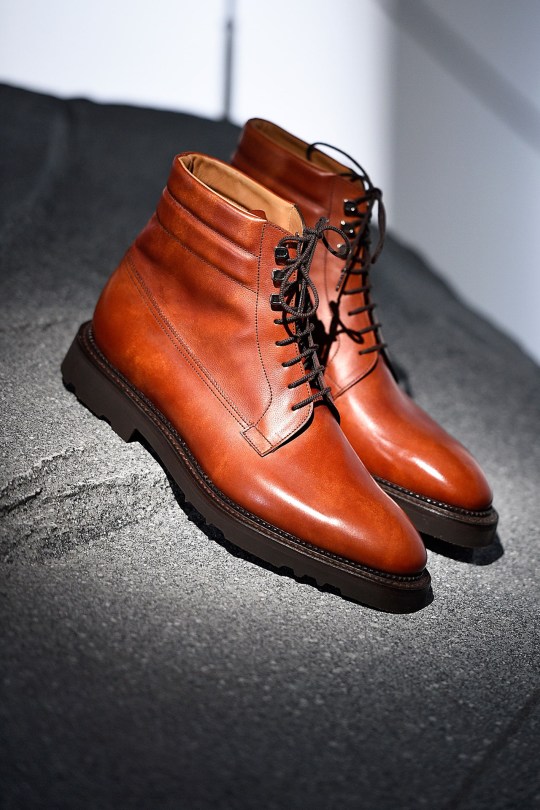
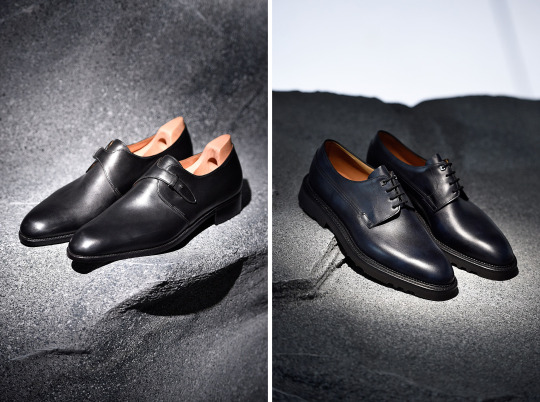
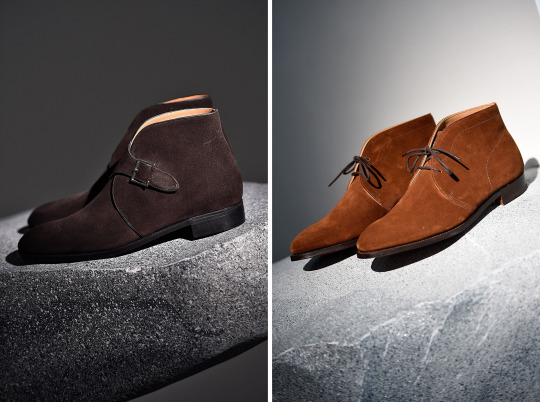
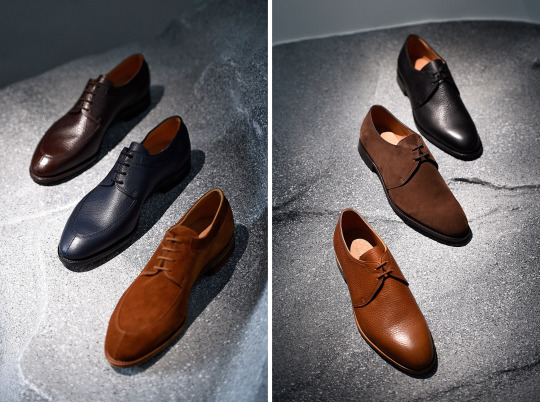
1205′s Paula Gerbase is in her third season now as the artistic director for John Lobb. Many of her designs feel like they’d go well with the kind of dressy, tailored casualwear you might find at Loro Piana. Lobb’s shapely lasts and classic designs are combined with subtle, contemporary details that you might not notice on first glance.
The walking boots above were inspired by archived 1940s ski-boots and feature padded collars, bellowed tongues, and rubber soles. They look like they would go well with parkas, even though they’re obviously more for walking down Madison Avenue than going up a ski-slope. There were also some elegantly designed two-eyelet derbies and single monk straps with single-hole punches. Not pictured above: soft colored minimalist sneakers, which every luxury line seems to offer now. Notice that many of the designs feature palladium speed hooks and eyelets, which is a nice touch for this sort of thing.
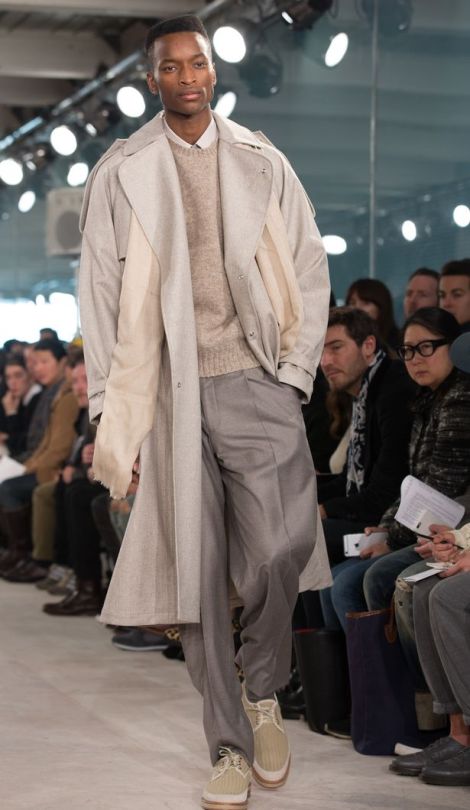
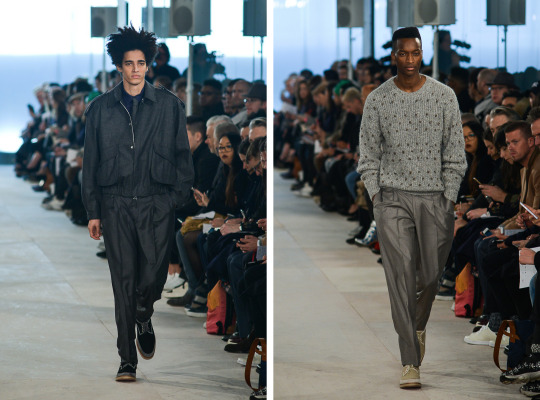
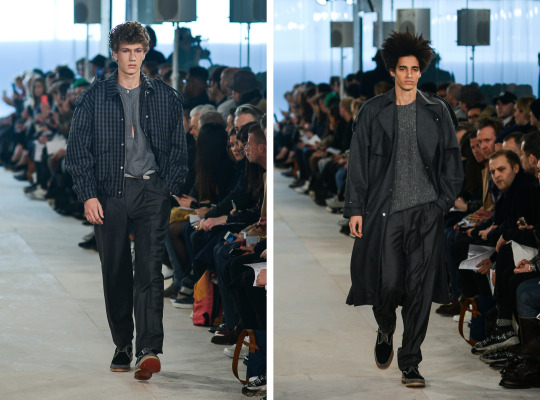
I love Patrick Grant’s work, partly because he shares my broader interest in classic tailoring and the world of fashion. As the owner of the Savile Row tailoring house Norton & Sons and designer for the E. Tautz fashion label, he demonstrates you don’t have to choose one over the other when appreciating men’s clothing.
This latest E. Tautz collection was inspired by a 1980s Edinburgh roller disco, when cool kids were wearing Gabicci sweaters and skating to the sound of the Eurythmics. There’s a nice mix of nostalgia and modernism here, with slouchy knits and oversized coats being worn in dark, monochromatic color palettes. I love the 1980s Armani Romanticism – free-flowing shapes hint at form, rather than just revealing. Also, lots of billowy pants, which I’m not sure the world is ready for (I like them, but I once tried them on before shamefully slinking back into my slim-cut trousers).
